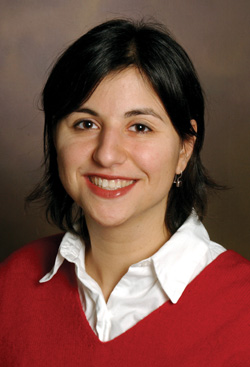
Dr. Natasha Halasa
Combination therapy can reduce need for prostate surgery
A long-term study led by Dr. Joseph A. Smith demonstrated that two-drug therapy can help men avoid surgery for benign prostatic hyperplasia (BPH), a common cause of prostate enlargement.
Results of the study appear in this week’s issue of The New England Journal of Medicine.
“This study shows for the first time that medical therapy can decrease the chance that a man will require surgery for prostate symptoms,” said Smith, William L. Bray Professor and chair of the Department of Urologic Surgery and the principal investigator. “Further, it showed that the combination of two drugs (finasteride and doxazosin) was more effective for this purpose than either used alone.”
Fifty percent of men over 50 develop symptoms of BPH, which include urine retention and the need for frequent urination, and 10 percent of these men require medical or surgical intervention. Commonly, BPH is treated by either finasteride, which reduces the size of the prostate, or doxazosin, which relaxes the muscles of the bladder.
The four-and-a-half year Medical Therapy of Prostatic Symptoms (MTOPS) Study examined the long-term effects of these drugs, comparing the effects of placebo, doxazosin, finasteride and combination therapy on the measures of clinical progression of BPH in 3,047 men. Of the study participants, 117 were Vanderbilt patients.
Clinical progression was defined as an increase above base line of at least four points in the American Urological Association symptom score, acute urinary retention, urinary incontinence, renal insufficiency or recurrent urinary tract infection.
The combination therapy, using both finasteride and doxazosin, reduced the risk of clinical progression by 66 percent as compared with the placebo, whereas each drug singly reduced the risk by less than 40 percent.
“If a patient chooses treatment with medication, the MTOPS study clearly demonstrated that two-drug therapy was more effective than treatment with a single agent,” said co-investigator, Dr. Doug Milam, associate professor of Urologic Surgery.
Though combination therapy was rarely prescribed previously, this study could increase its use in patients with BPH.
“This study could change patterns of care,” said Smith. “But, the expense of treatment must be considered, since men would have to take the medicine for five years or more to get the preventative effect.”
Smith said that while avoiding surgery is obviously desirable, patients should be aware that new techniques, such as laparoscopic prostate surgery, that have decreased the side effects of surgery.













